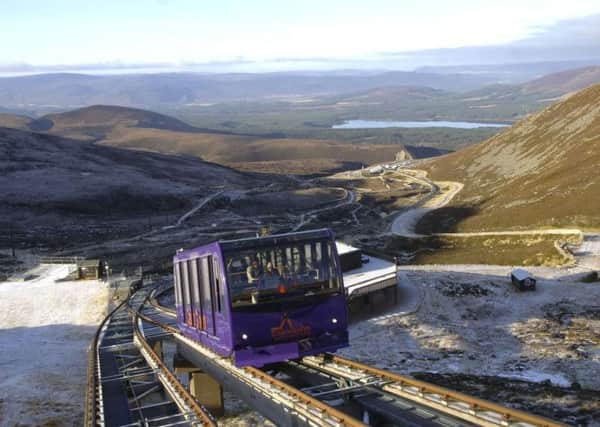Is it time for “the removal of the funicular” at Cairngorm Mountain ski area?


In the months following the end of the 2018-19 season – which, as luck would have it, was mostly an awful one for snow anyway – the Scottish skiing community has been waiting with bated breath to find out exactly how bad a state the funicular is in; and finally, the other week, we got what sounded like the beginnings of an answer. Apparently, according to the engineers, the condition of the track is “disappointing for its age [it was built in 2001] regardless of its environment” and there are “widespread minor deficiencies.” How much will it cost to fix? The amount of £10 million has been mentioned, although according to Dave MacLeod, HIE’s head of property and infrastructure, this is “an indicative, high-level estimate.”
“The report [by specialist engineers COWI] is not yet published,” he says, “but we have publicly communicated the key findings that, in addition to new bearings with greater load capacity, work is also required to the foundations, piers and beams.
Advertisement
Hide AdAdvertisement
Hide Ad“The £10m figure quoted is an early, high-level estimate for carrying out those works, plus additional previously planned upgrades. The business case covering different options will go to the HIE Board and Scottish Government early next year. If repair is considered to be the preferred option, then we will move to the next stage of gaining consents and procuring a contractor. At that point we can be clearer on actual costs.”
Concerned that an expensive programme of repairs will be waved through without much in the way of public scrutiny, five voluntary organisations – The Cairngorms Campaign, Campaign for a Better Cairngorm, North East Mountain Trust, Ramblers Scotland and the Scottish Wild Land Group – recently called for all further development on Cairngorm to cease until HIE release a promised masterplan for the resort and follow this up with a period of public consultation. They also took the opportunity to offer HIE a few pointers as to how the ski area should be managed in a document entitled Cairn Gorm: A Vision for the Future (that’s Cairn Gorm the mountain, as opposed to the Cairngorm Mountain ski resort) and many of their suggestions are things mountain users of all stripes should be able to get behind.
It’s hard to argue, for example, with their primary point that a masterplan for the ski area should be announced, debated and – where appropriate – amended, before any more structures are built, repaired or torn down. As the report puts it, “the time for piecemeal decision making is over.” It’s also hard to imagine many people disagreeing with the statement that “only developments which are in keeping with a sensitive high mountain environment should be considered,” although of course whether a given structure is “in keeping” or not is endlessly debatable.
Things get a little more controversial, however, when they get onto skiing. Apparently “ski uplift should be streamlined” – so streamlined, in fact, that “downhill skiing may well be confined to Coire Cas.” The same document speaks of a desire to “improve the skier experience” but for many intermediate and advanced skiers, the red and black runs in Coire na Ciste are by far the best thing about skiing at Cairngorm. Confining skiing to Coire Cas would in no way “improve the skier experience” for a significant proportion of paying customers.
The Vision for the Future document also calls for the removal of the funicular, arguing that “repair will be very expensive and costs for long term maintenance will continue.” That may be so, but it’s difficult to envisage any other form of uplift that would cope as well with the challenges posed by the unique setting of the Cairngorm ski area, in particular the high winds it experiences (chairlifts and gondolas aren’t great in a gale), and the fact that it’s often impossible to use drag lifts at car park level as the snowline tends to be considerably higher. The authors of the Vision for the Future document are right to identify the importance of enhancing the skier experience if Cairngorm is to continue as a viable ski resort. Unfortunately the removal of the funicular and (presumably) the remaining surface lifts in Coire na Ciste would have the opposite effect.